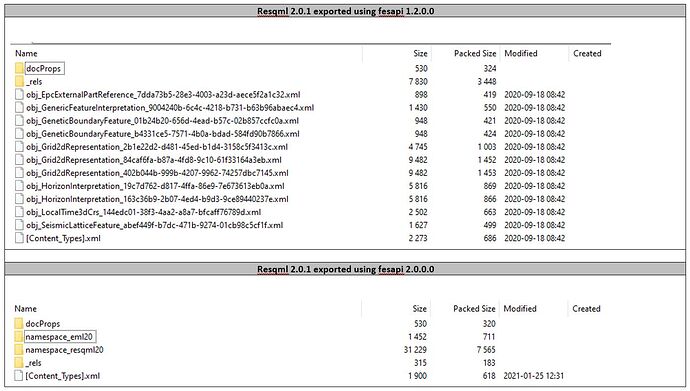Hello Philippe,
Wanted to clarify on this topic.
We are using fesapi libraries to write Resqml 2.0.1 files.
We earlier used fesapi 1.2.0.0 to write Resqml 2.0.1 files.
We recently upgraded to fesapi 2.0.0.0 to write Resqml 2.0.1 files.
We are noticing that structurally they are different, though we can use corresponding version of fesapi libraries to read them back.
Please see the attached image showing the differences.
(1) Could you please comment about the difference in the epc files structures.
(2) Additionally, for the Resqml 2.0.1 file written with fesapi 2.0.0.0 the Resqml 2.0.1 file validator (from energistics site), initially displays a warning “[Content_Type].xml has problem in PartName value !”, though it proceeds to import and validate it successfully. We did not have this warning for the Resqml 2.0.1 file written with fesapi 1.2.0.0.

The Resqml validator warning mentioned above is only happening if we write Grid2dRepresentation bulkdata that will end up in .h5 file.
We use java wrapper of fesapi.
Thanks,
Shakir
